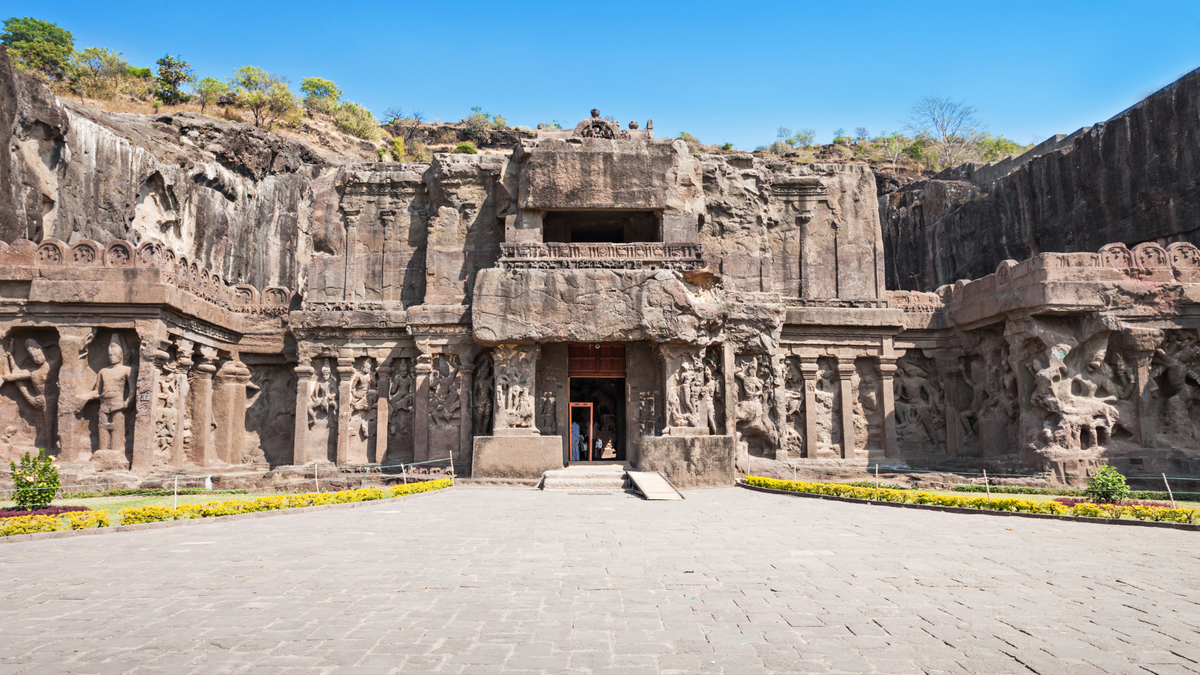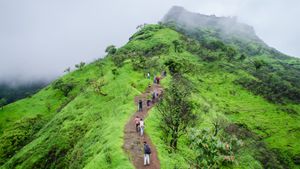India is an abode of culture, heritage and tradition. These rich reflections can be seen in the various historical destinations of India, ancient caves and also the popular monuments. Many of these are also official UNESCO World Heritage Sites in India. Feeling like a proud Indian, aren’t you?
One of the structural wonders of India are its caves. These ancient and historic caves represent the powerful glories of the various leaders and their dynasties that once ruled India.
Some of these caves are an immaculate display of arts and craftsmanship, while some are topography marvels. Some have a religious and cultural history attached to them, while there are others with carved tales of Indian history, religion, culture, tradition, and spirituality. If you are someone who takes keen interest in history or are a history buff, then these are some popular caves in Maharashtra that you must visit.
Famous caves in Maharashtra
1. Ajanta Caves

Ajanta Caves is one of the ancient caves in Maharashtra. There are a group of 29 Buddhist cave temples in Ajanta, which falls under Aurangabad district in India. Some of these Aurangabad caves even date back to the 2nd century BC. These caves display a fusion of both Theravada and Mahayana Buddhist traditions, and have some of the best masterpieces of Buddhist art in the country. It is a UNESCO World Heritage Site and is also one of those famous caves in Maharashtra. The caves of Ajanta were built in two phases, caves 9,10,12,13 and 15A were built in the first phase during the Satavahana dynasty and they belong to the Hinayana sect of Buddhism, while the second phase was carried out during the the rule of the emperor Harisena of the Vakataka dynasty. Colourful murals and statues associated with the life of Buddha and various Bodhisattvas along with everyday scenes and meaningful inscriptions can be seen in the walls of these caves.
Ajanta Caves, and the nearby Ellora Caves, are often explored by tourists together on tour.
2. Ellora Caves
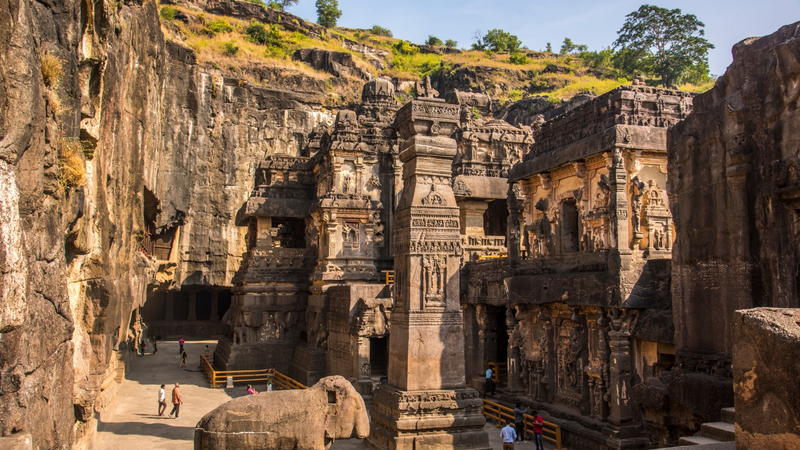
Ellora caves, known as Verul Leni by the local people, are situated in Aurangabad-Chalisgaon, about 30 km from Aurangabad. They are one of the most famous Aurangabad caves, and are also a UNESCO World Heritage site. It clearly is also one of the most famous caves in Maharashtra. These majestic rock-cut temple caves exhibit artwork and monuments of Jainism, Buddhism and Hinduism of the period of 600-1000 C.E. The Kailasha Temple of this group of monastery cave temples is an exemplary example of artwork with af monolithic single rock excavation located in cave 16.
The temple even displays the mythologies, goddesses and gods of Hindu epics and the Shaktism and Vaishnavism religion cults. The conglomeration of the Ellora caves has a total of 100 caves, out of which only 34 caves are for the public. This group comprises five Jain caves, 17 Hindu caves and 12 Buddhist caves. The 12 Buddhist caves date from 200 BCE to 600 BCE, whereas the 17 Hindu temples date from about 800 BCE to 1000 BCE. The Hindu caves are the most dramatic in design, whereas the Buddhist caves contain the simplest ornamentation.
These caves reflect the religious sentiments of the people of that era. The Rashtrakuta Dynasty built the Buddhist and the Hindu caves, whereas, the Yadav dynasty built the Jain caves. During the old times, these caves served manifold purposes namely an abode for praying, resting place for the pilgrims and monasteries for the monks.
Ellora Caves, and the nearby Ajanta Caves, are often explored by tourists together while they are on tour in either of the regions.
3. Elephanta Caves
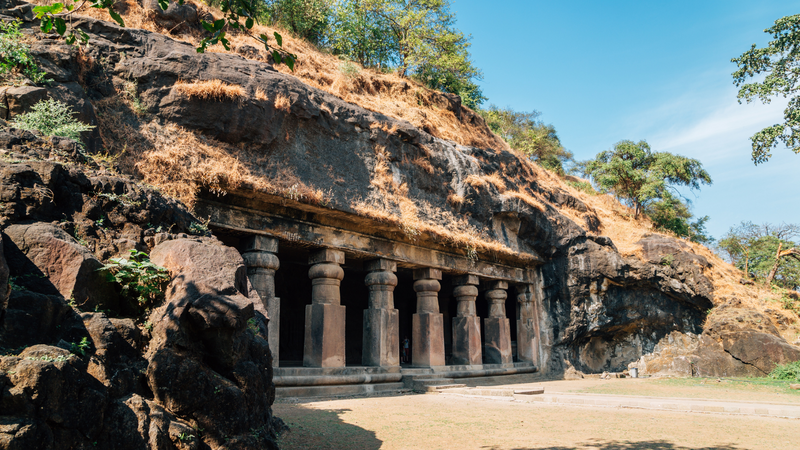
The Elephanta Caves in Mumbai, consist of seven ancient rock-cut caves situated on Elephanta island in the Mumbai Harbour region. It is again one of the most famous caves in Maharashtra, as well as in India. It was declared a UNESCO World Heritage Site in the year 1987, and is the oldest historical site in Mumbai. It comprises two cave groups - the first group includes five Hindu caves and the second one includes two Buddhist caves. The Hindu caves comprise the stone rock-cut sculptures devoted to the Hindu god, Lord Shiva, and represents the Hindu sect Shaiva. The caves are carved out of basalt solid rock. The rock cut cave architecture dates back to the period of 5th-8th century. Cave one or the main cave was the haven of worship of Hindu deities. Unfortunately, after the Portuguese began to rule, the caves were damaged to a considerable extent.
4. Karla Caves

Karla Caves, popularly known as Karla Cells, are a conglomeration of enticing rock-cut caves of Buddhist origin situated at Karli, an area close to Lonavala in the state of Maharashtra. These shrines were constructed in the period between 2nd-5th centuries. One of the oldest cave shrines belongs to the 160 BC period.
The Karla complex consist of 16 rock-cut excavations, of which cave eight is the Chaityagriha. These caves were developed over two periods; first from 2nd century BC to 2nd century AD and second in 5th-10th century AD. The Karla Caves are not as elaborate as compared to their counterparts at Ajanta and Ellora.
5. Aurangabad Caves
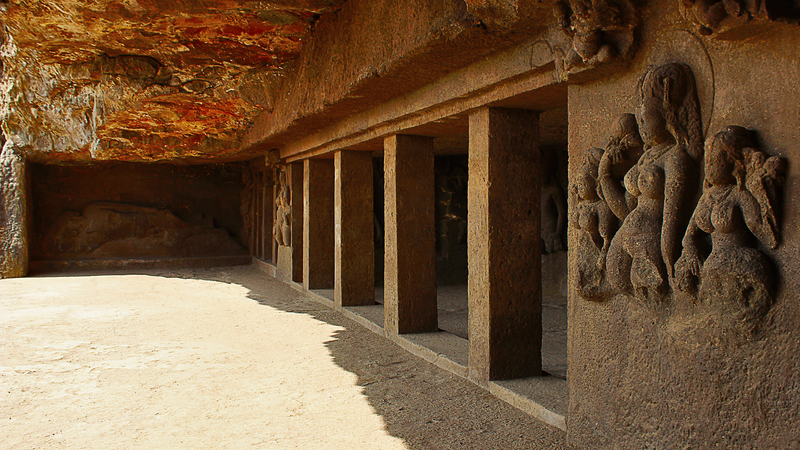
Aurangabad Caves are one of the most stunning caves in Maharashtra and are ancient caves too. There are a total of twelve caves of Buddhist origin, which are classified into three groups depending on the location. The first group comprises one to five, the second group comprises six to nine and the third group comprises 10 to 12 caves.
Cave one and cave two are viharas. Cave one is an incomplete vihara which is a dilapidated structure. Cave two has a Buddha shrine at the rear. The remaining caves belong to the Kalachuri Dynasty. Cave seven is the most intricately done up cave which is adorned with embellishments and flaunts a central shrine, along with an outer corridor for circumambulation. The veranda’s front wall has splendid representation of the litany panel of Bodhisattva and Avalokitesvara. The Avalokitesvara litany depicts the Bodhisattva Padmapani as the ‘Saviour of the Eight Great Perils’ like theft, demon, fire, lion, shipwreck, elephant, snake, monkey etc. Cave nine depicts a sculptured panel exhibiting Buddha in a state of nirvana.
6. Pandavleni Caves

These caves are also popularly known as Trirashmi Caves. They are ancient caves in Maharashtra that were built by prominent rules of those times namely the Satavahanas and Kshaharatas. They are basically rock-cut caves situated on Trirashmi hills to the south of Nashik. Most of the Pandavaleni Caves house magnificent idols of Buddha, and popular Jain Teerthankaras.
Seen as one of the most visited Buddhist religious centres, the Pandavaleni Caves consists of 24 carved cave temples called Viharas. However, the most beautiful caves are cave three and cave ten. One amongst those 24 carved cave temples is the Chaitya. In ancient times these viharas were used as monasteries where people met monks.. These caves were built by the rulers of that time like Satavahanas and Kshaharatas for Hinayana Buddhist monks. These mystic caves also also have musical fountains, museums and various food outlets. Hence, this ancient cave of Maharashtra is a popular tourist spot and is often flanked by a large number of tourists every year.
7. Kanheri Caves

These are another set of ancient caves in Maharashtra which are situated inside the popular Sanjay Gandhi National Park in Mumbai. Kanheri, also known as Krishnagiri or Kanhagiri in ancient inscription, literally means black mountain (Krishna means black and giri is mountain) and is mostly named after its black basaltic stone.
These caves present an insight into the evolution of Buddhism and also have the distinction of having the largest number of cave excavations from a single hill. The earliest cave constructions coincided with the arrival of Buddhism in Anathara, Sopara. Most of these caves are simple single or multiple-cell viharas, or monasteries, without any decorations.
They were meant for simple living, studying and meditating. Chaityagraha serves the purpose of worship halls. Most of the decorative art can be seen in later excavations and, in some cases, as a later addition to the earlier caves. A colossal Buddha and Chaityagraha in cave three, a large Avalokiteshvara (Bodhisattva who represents compassion) in Cave two, a painted ceiling in Cave 34 and a well planned water management system are a few of the highlights at the Kanheri Caves.
Disclaimer: The details mentioned throughout this blog are sourced from publicly accessible platforms. At Zeezest, we intend to share factual and verified information. Should there be any inconsistencies or variances in the information provided, please understand that these are entirely unintentional and not meant to mislead.


